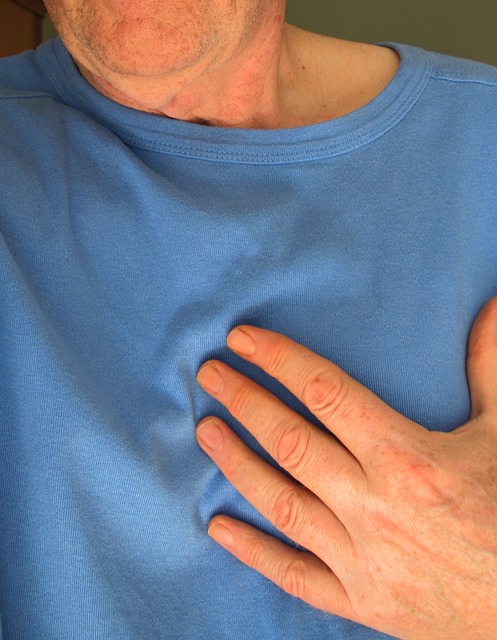Did you know that for several decades now, coronary heart disease remains the #1 killer in the world? Each year, millions of people die of the condition around the world. In fact, according to data from the World Health Organization (WHO), around 7.4 million people died of the condition in 2012 alone.
Each year, the condition claims the lives of millions of people – and it actually accounts to around 13% of all deaths. In contrast, only about 1.3 million people were killed in road accidents in one year.

Contents
I. What is Coronary Heart Disease?
Also known as ischemic heart disease, coronary heart disease or coronary artery disease is a condition that affects the heart, particularly the coronary arteries which are primarily responsible for supplying oxygenated blood to the heart.
Because coronary heart disease limits blood flow, this could lead to the death of myocardial cells due to lack of oxygen. According to HealthLine, the condition often leads to a heart attack which could be fatal.
II. Causes
The main cause of coronary heart disease is that the coronary arteries have become narrow due to the build-up of plaque. This plaque comes from different sources, including cholesterol, lipoproteins, calcium, and inflammatory cells.
With more cholesterol and inflammatory cells adding to the plaque build-up, the arteries become so narrow that blood flow might be restricted. According to WebMD, it is also possible for the plaque to burst. In both cases, this could lead to a fatal heart attack.
III. Symptoms
Chest pains are among the most common signs of coronary heart disease; however, some people mistake this with heartburn and might not visit their doctor until it is too late.
Chest pains will differ among patients, depending on the extent of the condition. At times, patients might experience chest pains even with regular activity such as after eating or a bit of walking but others might only feel the pain with strenuous activities such as doing exercise or running.
IV. Risk Factors
While genetics plays a role in coronary heart disease, other risk factors should be taken seriously. Obesity and diabetes are among the most common risk factors for the condition but smoking, high blood lipids, stress, hypertension, and smoking are also known to increase your chances of developing the condition.
According to several studies on medical journal The Lancet, stress in the job has also been linked to coronary heart disease; however, it is not a very high risk factor and only accounts to about 3% of cases although this still holds a high significance considering the number of cases of coronary heart disease.
Meanwhile, lack of exercise and a sedentary lifestyle, coupled with obesity, account to about 6% of cases – and this is something that should not be taken lightly, especially considering that most of the world’s population these days are physically inactive, reveals findings from medical journal PMC.
V. Diagnosis
When diagnosing the condition, patients may need to undergo several tests; however, the doctor often takes family history and the patient’s symptoms into consideration. For instance, while stress echocardiography is an important tool that helps the doctor fully diagnose the condition, this is often not used on patients with low risk of developing the condition or do not exhibit symptoms associated with the condition.
Depending on the symptoms exhibited as well as results of other diagnostic tests, patients might have to undergo the following tests:
- Baseline electrocardiography (ECG)
- Exercise ECG – Stress test
- Intravascular ultrasound
- Magnetic resonance imaging (MRI)
- Exercise radioisotope test (nuclear stress test, myocardial scintigraphy)
- Echocardiography (including stress echocardiography)
- Coronary angiography
VI. Treatment
Lucky for patients with coronary heart disease, there are now a lot of medicines they can use to manage their condition; however, these medications won’t treat the condition and bring back your coronary arteries to their healthy, ‘like new’ status.
Treatment options for coronary heart disease include:
- Use of medications
- Beta-blockers and/or calcium channel blockers
- Aspirin to prevent clots
- Nitroglycerin
- Statins to reduce cholesterol
- Lifestyle changes
- Exercise
- Eating healthy food
- Coronary interventions as angioplasty and coronary stent
- Coronary artery bypass grafting (CABG)
VII. Prognosis
Prognosis for coronary heart disease really depends on the extent of the condition – and thanks to having several treatment options, many people actually survive to old age and die of natural causes or some other condition.
Left untreated, however, the condition can progress swiftly and lead to death. Sadly, there are also a number of cases wherein young adults in their 30s die of an undiagnosed coronary heart disease even if they live a healthy lifestyle and actually exercise a lot.
According to Mayo Clinic, sudden deaths due to undiscovered heart defects in adults younger than 35 often happen after strenuous physical activity such as playing a sport. However, this is not because of plaque build-up (they’re too young and healthy-living for that!) but due to undiagnosed abnormalities in their coronary arteries.
Because of physical activity, the abnormal arteries might become compressed and unable to provide enough blood flow to the heart which leads to a heart attack and, possibly, death.
VIII. Prevention
Just like many medical conditions, prevention is better than cure when it comes to coronary heart disease. Knowing that the condition is often due to lack of physical activity, unhealthy diet, and an unhealthy lifestyle in general, it’s time to consider changing your habits before it is too late.
Cutting out food rich in bad cholesterol and adding more vegetables into your diet can go a long way in preventing plaque build-up. Regular exercise is also good for your body but make sure not to overdo things, especially if you are still starting out.
If possible, consult a doctor first before starting an exercise regime to determine if you have a previously undiagnosed heart condition that must be taken into account when you choose the right exercise options.
If you have a family history of coronary heart disease, especially involving sudden cardiac death in someone younger than 50, it is best to talk to your doctor about screening options as early as possible – especially if you want to start an exercise regime or experience chest pains.





